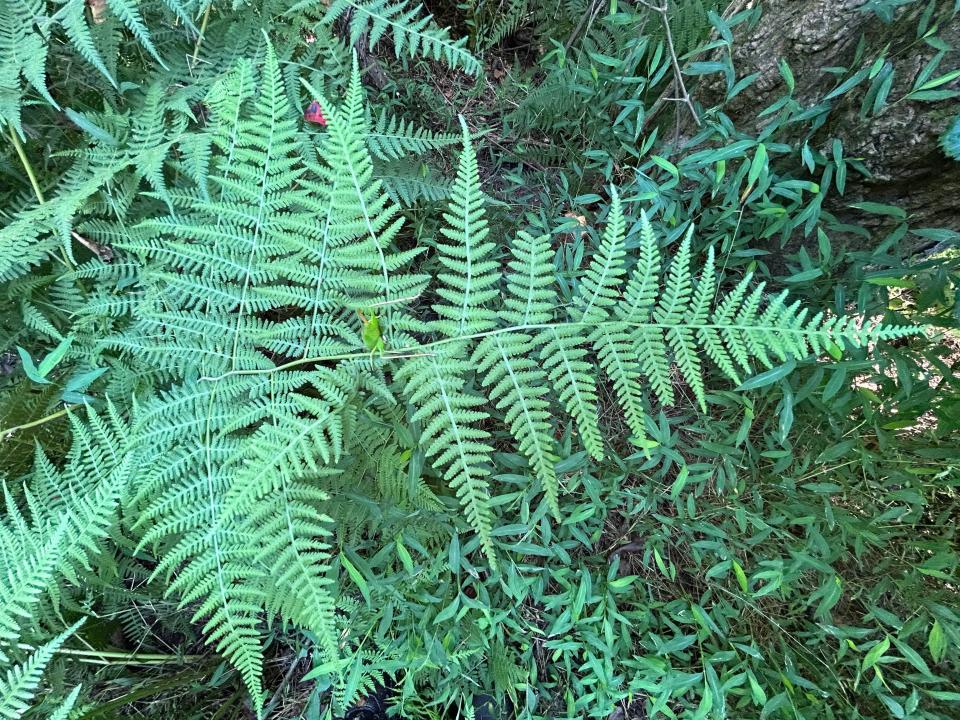Spreading fern story has a Tallahassee connection | Mystery Plant
I am sad to say that one of my best friends and botany buddies died last year. Steve W. Leonard was a Tarheel from Davidson County, North Carolina, graduating from UNC-Chapel Hill with his bachelor’s and later master’s degree (in 1973) in botany.
I knew him while he had taken up residence in Tallahassee, during my stint as a grad student at Florida State University. Steve was something of a mentor for me; I still marvel at his superlative abilities as a field botanist. Nothing escaped his keen eye. He prepared thousands of excellent plant specimens, which, of course, are still with us in a wide variety of herbaria at colleges and universities throughout the country.
One of his contributions to science was recognizing the rapid expansion of a particular fern, not native to North America, which had suddenly appeared “on the radar” of Southeastern botanists. Our Mystery Plant continues this saga begun by Steve.

It turns out that back in 1904, a botanist named Alvah Augustus Eaton (from Massachusetts) was studying plant life near Oviedo, Florida, which is in present day Seminole County. Eaton made specimens of a fern which had escaped from cultivation, not knowing exactly what he was dealing with, which of course is our Mystery Plant: Mariana maiden-fern, Macrothelypteris torresiana.
Steve Leonard, in 1972, carefully documented the rapidly expanding range of this plant outside of Florida, noting that from 1936 through 1970, herbarium specimens of it had been made from southern Georgia, Alabama, Mississippi, Louisiana, and eastern Texas. Of course, we cannot assume that the plants from Seminole County, Florida, had been the sole source of this continuing spread, but we can assume that this fern had not stopped its northward “travels.”
And, by the way, it turns out that Steve himself had collected it in 1971 from South Carolina (Aiken County, near the Savannah River), marking its first known occurrence in that state.
Flash forward to the present: botanists since the 1970s have continued to observe this fern in additional states. It is now known as an introduced species from a number of additional South Carolina counties, and it gets as far north as Kentucky and southern Illinois.
It really is an attractive fern, with bright green fronds up to 4 feet long. The fronds are divided delicately into scores of “pinnae” and each of these is further divided, too. As with other ferns, spores are produced on the underside of each frond. The spores are released from tiny structures called sporangia (they are tiny, too), sequestered into little round dots.
This species likes to grow in shady woods along creeks, sometimes, but not always, seeming to prefer a limestone substrate. (The image here shows one of several hundred plants which I saw growing last week in a patch in Orangeburg County, South Carolina.)
Although it is attractive, this species bears the trademarks of an invasive plant — and so this little story has a rather dark ending. Time will tell. But thanks to Steve Leonard and a lot of subsequent botanists, we may have a handle on where it’s headed.
John Nelson is the retired curator of the Herbarium at the University of South Carolina, in the Department of Biological Sciences. As a public service, the Herbarium offers free plant identifications. For more information, visit herbarium.org or email johnbnelson@sc.rr.com.
This article originally appeared on Tallahassee Democrat: Mariana maiden-fern has a Tallahassee connection

